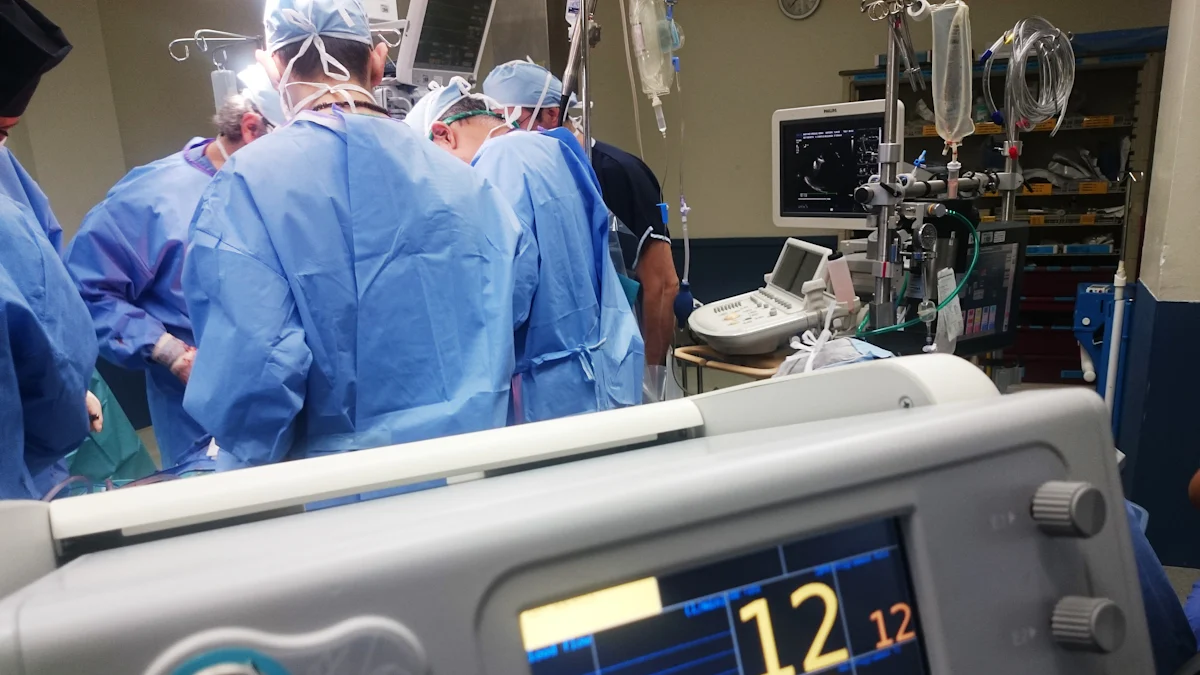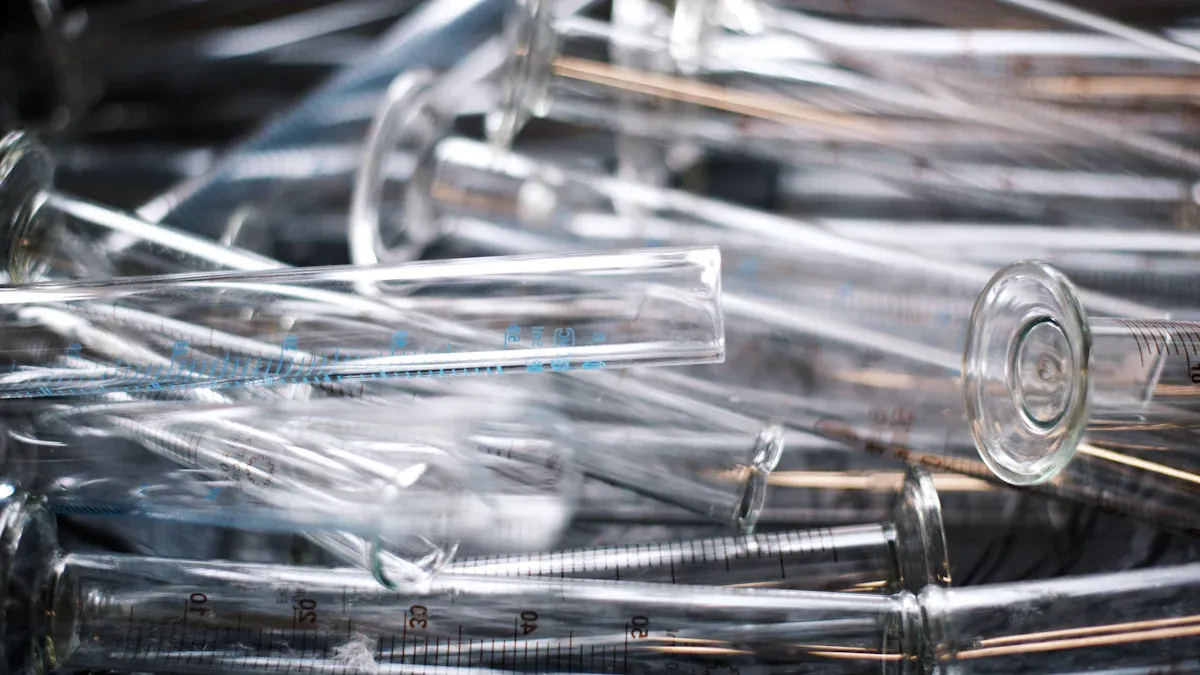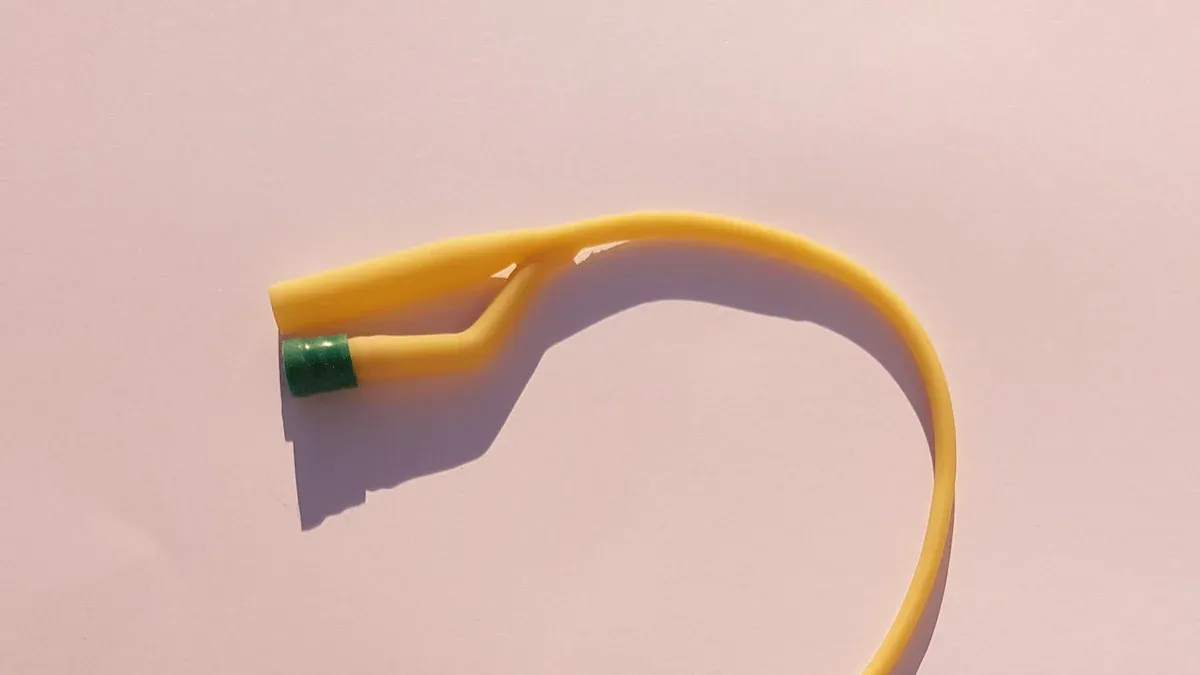Why Polyimide Tubing Is Best for Catheters

Polyimide tubing for medical catheters is an excellent choice due to its strength and flexibility, which facilitate the creation of complex designs. This material is not only safe but also durable, making it ideal for critical medical applications. Additionally, it fosters innovation in medical tools with its precise and customizable features. Because it integrates well with the body, polyimide tubing for medical catheters plays a crucial role in modern healthcare solutions.
When selecting materials for medical tools, it is essential to choose something that is strong, safe, and reliable. Polyimide tubing for medical catheters meets all of these criteria.
Key Takeaways
Polyimide tubing is strong and bendable, perfect for tricky catheter designs.
It is safe for the body, lowering chances of bad reactions in patients.
This tubing can be made to fit exact medical needs for better use.
Its smooth surface makes it more comfortable and less painful to insert.
Pick a trusted maker to meet safety rules and good quality.
Key Benefits of Polyimide Tubing for Medical Catheters

Flexibility and Strength for Complex Designs
Polyimide tubing is strong and flexible, perfect for tricky catheter designs. It can handle complicated shapes without losing its strength. This is very important for medical procedures needing accuracy and flexibility.
Advanced designs, like a 16-wire braid with equal copper and nitinol, improve the tubing's abilities. These include being easy to guide, bendable, and twistable, which help it move through tough body pathways. This design also allows clear viewing of a 70 cm shaft during MR imaging, both in labs and in the body. Even then, the temperature rise stays below 2°C within 10 cm of the center, keeping it safe and reliable.
Using polyimide tubing for catheters gives you a material that is both strong and flexible. It helps create new solutions for complex medical needs.
Biocompatibility and Safety in Medical Applications
Safety is very important for medical tools. Polyimide tubing is special because it works well with the human body. It reduces the chance of bad reactions. Its stable nature means it doesn’t harm nearby tissues or fluids, making it great for delicate medical uses.
Polyimide tubing stays strong in different conditions. It resists chemicals and high heat, so it works well during cleaning processes. This makes it a reliable choice for catheters used in important procedures.
By focusing on safety and working well with the body, polyimide tubing helps patients while meeting strict medical standards.
Precision and Customization for Specific Needs
Polyimide tubing is very precise and can be made to fit exact medical needs. Its production process ensures it fits perfectly in catheter designs. This accuracy is key for making it work well in special medical uses.
The smooth inside of polyimide tubing lowers friction and helps fluids move better. This is useful when precision and speed are needed. The tubing can also be coated or changed to make it smoother, insulate electricity, or add other helpful features.
With polyimide tubing, you can solve unique medical challenges. Its accuracy and flexibility make it a key material for improving catheter technology.
Smoothness and Lubricity for Patient Comfort
Patient comfort is very important when using medical catheters. The smooth surface of polyimide tubing helps reduce pain during procedures. Its natural slipperiness lets the catheter slide easily through the body. This lowers friction and avoids irritating tissues. This is especially helpful in sensitive areas where irritation can hurt or cause problems.
Why does smoothness matter so much? A rough surface can make it harder to insert or move the catheter. This can cause more pain and even harm tissues. Polyimide tubing solves this problem. Its super-smooth surface gently interacts with the body, making the experience better for patients.
Another great thing about polyimide tubing is that it stays smooth even after being coated. Many medical tools need extra coatings, like hydrophilic ones, to make them even slipperier. Polyimide tubing handles these coatings without losing its strength. This makes it a flexible choice for different catheter designs.
The slipperiness of polyimide tubing also makes procedures faster. A catheter that moves easily through the body saves time. This can help patients recover quicker and feel less stressed. Choosing polyimide tubing for catheters gives both comfort and good performance for patients and doctors.
Tip: Talk to your manufacturer about coatings to improve the smoothness and slipperiness of your polyimide tubing.
Factors to Think About When Picking Polyimide Tubing for Catheters
Size, Wall Thickness, and Fit
When picking polyimide tubing, size and wall thickness matter a lot. The tubing must fit perfectly in the catheter for it to work well. If the size is wrong, it can cause problems during medical procedures.
The wall thickness affects how strong and bendable the tubing is. Thin walls make the tubing more flexible, which helps it move through tricky body paths. Thick walls are stronger and handle more pressure. You need to balance these based on what your medical tool needs.
The fit is also very important. Tubing that fits tightly in the catheter works better and avoids leaks or clogs. Always measure carefully and talk to your manufacturer to get the right fit.
Coatings and Additives for Better Performance
Coatings and additives can make polyimide tubing work even better. These upgrades help the tubing last longer and work in more ways.
Additives make the tubing tougher, so it lasts longer under stress. This means fewer replacements and lower costs.
Coatings make the tubing stronger and able to handle heat, so it works well in tough conditions.
Some coatings give the tubing great electrical properties, making it good for catheters with sensors.
You can also add slippery coatings to reduce friction. This makes the tubing easier to insert and more comfortable for patients. Talk to your manufacturer about the best coatings and additives for your needs.
Heat Resistance and Chemical Safety
Polyimide tubing is great because it handles heat and chemicals well. These features make it perfect for tough medical jobs.
The tubing can take high heat without breaking. This is important for cleaning, where heat kills germs. Even after many cleanings, the tubing stays strong and works well.
It also stays safe when it touches different fluids and chemicals. This is key in medical settings where it might meet body fluids, cleaners, or medicines. Polyimide tubing doesn’t break down, so it keeps working over time.
By thinking about these things, you can pick tubing that works safely and efficiently for medical procedures.
Mechanical Performance and Pressure Resistance
Polyimide tubing works great for medical tools. Its special polymer build makes it very strong and long-lasting. It can handle high pressures during medical procedures without breaking. Whether for diagnostic or treatment devices, polyimide tubing stays reliable under stress.
Another big benefit is its ability to resist pressure changes. It stays strong even when pressures go up and down. This is super important for catheters used in heart procedures, where steady performance is a must. Polyimide tubing handles tough conditions while staying safe and effective.
It also keeps its shape after being used many times. This means it doesn’t bend or break easily, giving steady results. Its durability means fewer replacements, saving time and money. Choosing polyimide tubing means picking a material that lasts and works well.
Tip: Think about the pressure needs of your device. Talk to your manufacturer to get the best tubing for your requirements.
Regulatory Compliance and Manufacturer Reputation
Medical tools must follow strict rules to stay safe. Polyimide tubing meets these tough standards to ensure it works well. Below is a table showing key rules for polyimide tubing:
Regulatory Standard | Why It Matters for Polyimide Tubing |
|---|---|
REACH | Keeps chemicals safe |
RoHS | Limits harmful materials |
FDA | Ensures safety for medical use |
These rules make sure the tubing is safe for medical jobs. Always check that the tubing you pick follows these rules.
The manufacturer’s reputation is just as important. A good supplier makes sure the tubing is high quality and meets industry rules. Look for companies with ISO 9001 certification, which shows they care about quality. Reliable suppliers share clear details about their products. Reviews and examples can help you learn about their trustworthiness.
Note: Working with a trusted manufacturer ensures your tubing is safe and high-quality.
Comparing Polyimide Tubing to Other Materials for Medical Applications

Polyimide vs. PTFE: Strength and Versatility
Polyimide tubing and PTFE have different strengths for medical uses. Polyimide handles heat better, making it great for hot environments. PTFE is good with heat but not as strong as polyimide. Both materials resist chemicals, so they last when cleaned or used with body fluids.
Polyimide is safe for the body and lowers bad reactions. PTFE is also safe, so both work well in medical tools. PTFE is stronger, with a tensile strength of 25-68 MPa and stretchability of 50%-350%. This makes PTFE better for very flexible uses.
Property | Polyimide Tubing | PTFE |
|---|---|---|
Thermal Insulation | Great, handles high heat | Good, but less than polyimide |
Chemical Resistance | High, resists cleaning agents and fluids | Excellent, works with harsh chemicals |
Biocompatibility | High, safe for the body | High, safe for medical use |
Mechanical Strength | Good, fits many uses | Excellent, very strong and flexible |
Pick the material based on your needs. For heat and safety, choose polyimide. For strength and flexibility, PTFE is better.
Polyimide vs. Silicone: Durability and Flexibility
Polyimide and silicone each have special benefits for medical tools. Silicone is very soft and bendable, making it useful for flexible designs. But polyimide lasts longer because it doesn’t wear out easily.
Silicone’s softness can make it weaker under high pressure. Polyimide stays strong even in tough conditions. This makes it a better choice for catheters needing strength and accuracy.
If you want both flexibility and durability, polyimide is a stronger option than silicone.
Polyimide vs. Other Materials: Unique Advantages
Polyimide tubing is different from other materials because of its special features. Unlike metals, it is light but still strong. This makes it easier to use and gentler for patients. Compared to plastics, polyimide handles heat and chemicals better, so it works well in medical settings.
Its smooth surface helps patients feel less pain during procedures. Polyimide can also be coated or changed to fit specific medical needs. These qualities make it a smart and flexible choice for modern catheter designs.
Considering all these points, polyimide tubing is a top choice for strength, safety, and adaptability in medical tools.
Polyimide tubing is great for modern medical tools. It is strong, flexible, and safe for the body. This makes it perfect for tough medical jobs. Its accuracy helps it fit any catheter design well. Using polyimide tubing means safety, strength, and good performance. Always work with trusted makers to ensure it meets rules and your needs. Picking polyimide tubing gives you a dependable choice for advanced medical devices.
FAQ
Why is polyimide tubing better than other materials for catheters?
Polyimide tubing is strong, flexible, and safe for the body. It handles heat and chemicals well, making it last longer. Its smooth surface makes patients more comfortable. It’s also precise, allowing for advanced catheter designs. These features make it better than many other materials.
Can polyimide tubing be made for specific medical needs?
Yes, polyimide tubing can be tailored to fit your needs. Manufacturers can change its size, thickness, or add coatings. This helps it work perfectly with your catheter design. It also improves performance for special medical uses.
Is polyimide tubing safe for the human body?
Polyimide tubing is very safe and works well with the body. It lowers the risk of bad reactions and stays stable with tissues and fluids. Its safety makes it great for delicate medical procedures.
How does polyimide tubing handle cleaning and sterilization?
Polyimide tubing can take high heat and strong cleaning chemicals. It stays strong even after many cleanings. This makes it reliable for long-term use in medical tools.
What should you look for in a polyimide tubing manufacturer?
Choose manufacturers with good reviews and certifications like ISO 9001. Make sure they follow rules like FDA, REACH, and RoHS. Trusted makers give clear details and offer custom options to fit your needs.
Tip: Always talk to your manufacturer to ensure the tubing meets your medical and safety needs.
See Also
Why PTFE Is The Best Option For Medical Catheters
The Role Of Medical Grade FEP In Multi-Layer Catheters
The Benefits Of Nickel-Titanium Tubing For Catheters And Implants
Three Reasons Why Etched PTFE Outperforms Other Catheter Materials

